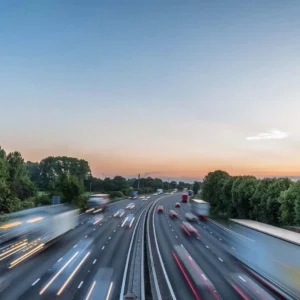It’s been a year since photo radar began to be enforced in Community Safety Zones throughout Toronto, and the number of tickets being issued each month continues to rise. What was once a political hot potato is fast becoming a fixture around our schools. And while the consequences of being caught speeding by these devices don’t directly affect your insurance rate and driving record, it can have a big impact on your pocketbook.
We all know the feeling of suddenly realising you have just sped past a parked police cruiser doing 20 km/h over the speed limit. A big shot of adrenalin runs through your veins as you look in the rear-view mirror to see if those lights are going to start flashing. Nowadays that sense of dread can linger for days, spiking every time you open your mailbox.
But just what are the consequences of finding a speeding ticket in there, along with a photo of the back of your car? Well, to the driver, surprisingly little. It is the owner of the vehicle that bears the responsibility in the eyes of the law. So, the important thing is…be careful who you’re lending your car to!
I got a ticket in the mail. What does this mean for my auto insurance?
Under current regulations, Automated Speed Enforcement cameras (ASE cameras) are much like red light cameras in that they don’t affect your insurance premiums. The cameras are designed to take a photo of the licence plate of a speeding car, not the driver of the vehicle, so it is impossible for authorities to know who exactly is behind the steering wheel at the time of the infraction.
The resulting ticket is issued and sent to the registered owner of the vehicle, who is in turn responsible for it to be paid. Because the driver is unknown:
- No demerit points are issued
- No one’s driving record is affected
- The registered owner’s insurance premiums remain the same
What’s more, the city does not grant access to the information gathered from these traffic tickets to insurance companies.
So, it doesn’t matter for your insurance policy if your son or daughter takes the car out for a spin and racks up a few photo radar fines. It won’t increase your rate, though it might take a toll on the Bank of Mom and Dad.
How much is a photo radar fine?
ASE devices (the fancy name for photo radar cameras) are set up in Community Safety Zones. These are areas where there are many children and elderly people crossing the streets, such as near a school or long-term care home. Because of this, the fines are more hefty proportional to the speed you are going.
| Km/h Over Limit | Fine |
|---|---|
| 1 – 19 | $5 per km |
| 20 – 29 | $7.50 per km |
| 30 – 49 | $12 per km |
Anything over 50 km/h and you will be summoned to appear in court where your penalty will be decided by a judge. So, make sure you’re not lending your car to any speed demons in the family! Telling the judge that it wasn’t you driving the vehicle is not going to get you off the hook.

Remember
In Ontario, being detected speeding by a photo radar device is an owner liability offense.
Where are photo radar cameras located?
There are 50 ASE devices installed around Toronto. They are located on local, collector and arterial roads in Community Safety Zones. The city has kept them away from the main highways and streets in order to reinforce the message that photo radar cameras are about safety for our children, not just a slick way of raising taxes.
Camera rotations
Still, photo radar locations are changed periodically, so if you have been planning your route in such a way as to avoid them, you may want to keep yourself informed. As of June 2021, the cameras will be set up in new spots under a so-called third round of locations.
Not only are photo radar areas well-indicated by signs notifying motorists of their presence, the city also provides a list of photo radar locations which includes a link to a map to make it all the more transparent.
Tickets issued
- First round of locations: Enforcement began in July 2020, and the subsequent months saw just over 20,000 tickets issued per month.
- Second round of locations: The cameras were moved to new locations in November 2020. By January 2021, roughly 30,000 tickets were being issued each month.
- Third round of locations: We shall see…
The point of rotating the cameras, according to city spokesperson Hakeem Muhammad, is to deter drivers from speeding, increase speed compliance, alter driver behaviour, and to raise public awareness about the need to slow down.
Is photo radar here to stay?
It looks like it. Toronto Mayor John Tory has said, “Speed cameras are a proven traffic calming measure that we will continue to rotate across the city because we are committed to making our roads safer.”
For the most part, the public has come a long way on this issue since the days of Bob Rae’s NDP government, who were the first to introduce Ontarians to photo radar. After the government pulled in over $2 million in fines, opposition parties began to label photo radar “a cash cow”, until Mike Harris scrapped the program in 1995.
Since the reintroduction of photo radar in January 2020, the public has largely gotten behind Tory. Most of that comes down to the fact that they are exclusively located in Community Safety Zones. It’s hard to argue that motorists shouldn’t slow down to a safe speed in a school zone.
But are they as effective as the mayor suggests? Well, several other jurisdictions in Canada and the U.S. have implemented photo radar programs with great success:
- In 2016, Quebec reported its program had reduced average speeds by 13.3 km/h and reduced accidents by 15% to 42% in the relevant areas
- Saskatchewan saw speeds fall by up to 17% and speed-related injuries drop by 51%
- New York City reduced speeding by 63% and pedestrian injuries fell by 23%
Additionally, a study done by the Insurance Institute for Highway Safety (IIHS) found that vehicles exceeding the speed limit by 10 km/h dropped 70-88% within eight months in the jurisdictions they looked at.
Is there a negative side to photo radar?
There don’t seem to be many arguments against placing photo radar cameras in school zones specifically, though there have been some concerns raised:
- Due to the fact that no demerit points are issued, and nothing is put on your driving record, many people worry that this gives wealthy people carte blanche to speed
- Some studies suggest that while cameras reduce the chances of being t-boned, there is a heightened risk of being rear-ended when people slam on their brakes as they enter these zones
- And of course, there’s the slippery slope argument that as the city gets used to the revenue they generate, more and more cameras will be installed throughout the city
In the end, it looks like we will be dealing with photo radar indefinitely. So, the best way to avoid a ticket, other than changing your route, is to simply slow down when you’re near a school. And be prudent about who gets behind the wheel of your car!
If you have any questions about how speeding tickets, especially those issued by a police officer, may affect your insurance rates call Mitch Insurance now at 1-800-731-2228.
Looking for car insurance?
Speak with a Mitch Insurance broker today to get a quote on Ontario auto insurance quote.
Call now
1-800-731-2228







